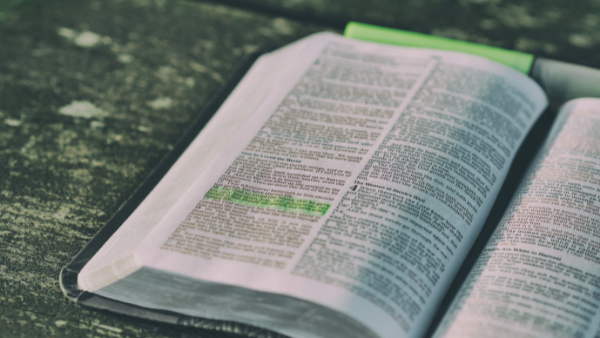By Dr. Ben Stubblefield
Visiting assistant professor of Christian Studies, University of Mobile
Reach Out Your Hand
John 20:19–29
Commissioned (19–23)
Though likely astounded by Mary’s report of the resurrected Christ, the disciples remain confused and fearful for their future. They gather, and their doors are shut “for fear of the Jews.” Jesus presents Himself to them, apparently bypassing a locked door, and shows them the scars on His hands and side.
The rest of the New Testament indicates we’ll receive a resurrection body, freed from weakness, disease and death. Yet Jesus retains the branding of His crucifixion because His disciples would need evidence He truly rose from the dead.
For the disciples to risk their lives for Christ, there could be no misunderstanding.
Jesus breathed on them, saying, “Receive the Holy Spirit.” This is an unusual and hard-to-understand-moment. It does not reconcile easily with Luke’s account of the church’s reception of the Holy Spirit at Pentecost.
The simplest, most believable solution is also one of the oldest solutions, put forward by Theodore of Mopsuestia (350–428 A.D.), who said Jesus enacted here a symbol of the commissioning the church would receive at Pentecost as detailed in Acts 2. It’s not in competition with the scene detailed in Acts; it’s a prefigurement of it.
The Lord continues to instruct, in what is yet another much-interpreted verse about the disciples’ authority to forgive and retain sins. One reading connects verse 23 to the church discipline passages (Matt. 16:19, 18:15–20). Jesus is not suggesting His disciples have the final authority of salvation and condemnation, but that His people, the Church, have the responsibility to confirm or deny, based on the evidence of visible obedience or disobedience, that individuals possess saving faith.
Demands (24–25)
Thomas gets a bad rap, but I think he was really just a normal guy. In today’s world, I too would be incredulous about the resurrection. I rarely take anything at face value, particularly if it’s too good to be true.
While you may be frustrated with people like me or Thomas, notice that the Lord doesn’t throw him out of the group. He’s patient. He works with Thomas and wins him over. Perhaps you’re not a doubtful person but someone dear to you is. It’s good to remember the Lord is patient with the skeptic. Our churches have folks still struggling to believe. Let’s be lovingly patient with them too.
Believed (26–29)
Eight days later, Jesus reappears to His disciples, this time with Thomas among them. And He goes about proving His authenticity to the doubter. Thomas makes the good confession: “My Lord and my God!” In many ways, this declaration is the aim of John’s gospel. It’s the thesis of the prologue and the conclusion of the book, indeed, the very reason John wrote.
There is a special blessing for those who will make Thomas’ same confession and yet have not seen Him at all (1 Pet. 1:8–9).
I sometimes wonder what we would call the best evidence for Christ, after His ascension, that would continue to win over today’s Thomases. I think Jesus’ intention was for the visible Church, you and me, to be one of the most persuasive proofs of His resurrection (John 13:35). We are His body, His ambassadors, His vessels. The question worth considering is: Are we exhibiting the character of Christ so clearly that the skeptics in our generation cannot help but conclude that Jesus is alive?



Share with others: